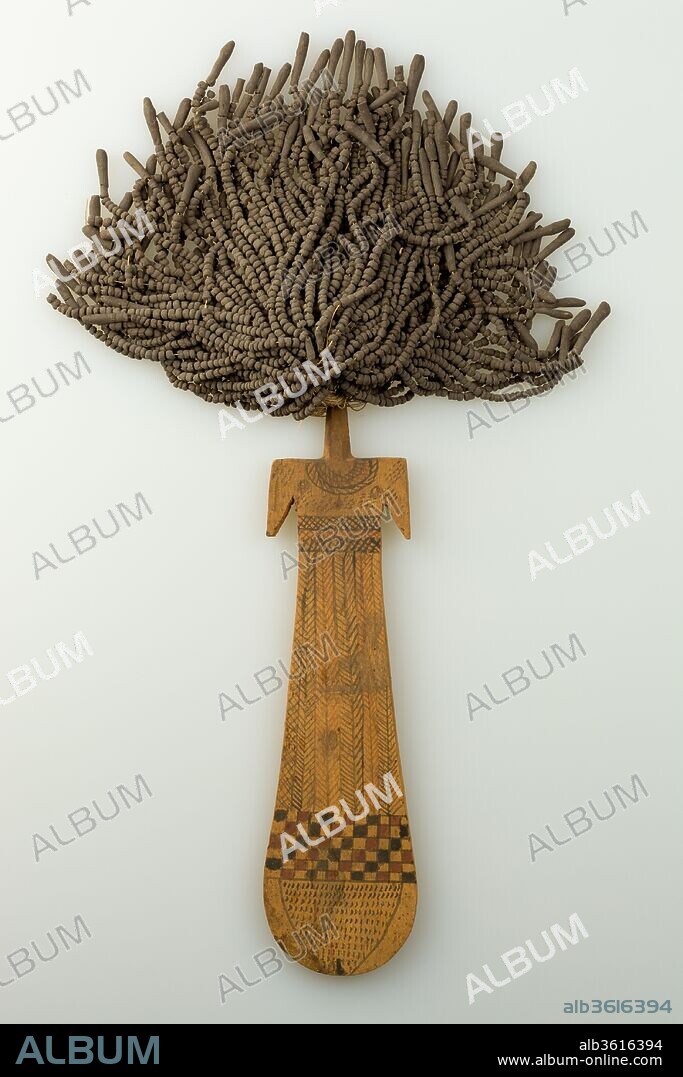alb3616394
Paddle Doll

|
Zu einem anderen Lightbox hinzufügen |
|
Zu einem anderen Lightbox hinzufügen |



Haben Sie bereits ein Konto? Anmelden
Sie haben kein Konto? Registrieren
Dieses Bild kaufen

Titel:
Paddle Doll
Untertitel:
Siehe automatische Übersetzung
Paddle Doll. Dimensions: Body: H. 22.8 cm (9 in.); W. 7 cm (2 3/4 in.); Th. 0.9 cm (3/8 in.). Dynasty: Dynasty 11, late-12. Date: ca. 2030-1802 B.C..
The so-called paddle doll consists of a flat piece of wood depicting the torso, rudimentary arms and neck of a woman, with a thick shock of "hair" made of beads strung on linen thread. The body is often painted with jewelry, textile patterns and/or tattoos. Contrary to their modern name, these "dolls" were not toys. The key-hole shape of the body is similar to the counterpoise of the menat necklaces that were used as percussion instruments during religious ceremonies (see 11.215.450) . When shaken, the beads of the menat necklace would have made a sound intended to appease a god or goddess. The paddle dolls, with their beaded hair, may have served the same purpose. It has been suggested that paddle dolls were an accoutrement of troops of singers and dancers who performed at religious ceremonies associated with the goddess Hathor.
Technik/Material:
Wood, mud, linen string, paint
Zeitraum:
MIDDLE KINGDOM
Museum:
Metropolitan Museum of Art, New York, USA
Bildnachweis:
Album / Metropolitan Museum of Art, NY
Freigaben (Releases):
Model: Nein - Eigentum: Nein
Rechtefragen?
Rechtefragen?
Bildgröße:
2934 x 4400 px | 36.9 MB
Druckgröße:
24.8 x 37.3 cm | 9.8 x 14.7 in (300 dpi)
 Pinterest
Pinterest Twitter
Twitter Facebook
Facebook Link kopieren
Link kopieren Email
Email
